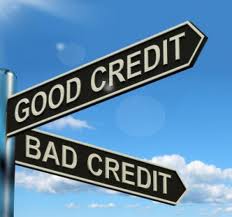The Credit Score That You See – NOT The Same As Lenders See
The credit score you receive may be much higher or lower than the one a lender uses when deciding whether to give you a mortgage, credit card or auto loan, a new government report finds.
One out of five consumers is likely to receive a score that is “meaningfully” different from the score used by a lender to make a credit decision, according to study from the Consumer Financial Protection Bureau that analyzed 200,000 credit files from the three major credit bureaus, TransUnion, Equifax and Experian.
As a result, many of these consumers receive either better or worse terms on mortgages, credit cards, auto loans and other credit products.
“This study highlights the complexities consumers face in the credit scoring market,” said CFPB Director Richard Cordray in a statement. “When consumers buy a credit score, they should be aware that a lender may be using a very different score in making a credit decision.”
The credit score a lender sees often depends on the type of loan or credit product they are considering. Lenders that use FICO scores the most commonly used score, could be looking at one of 49 different scores to determine how risky you are — including a FICO auto score, a FICO bankcard score and a FICO mortgage score.
YOU HAVE 49 FICO SCORES
While you receive only one type of FICO score, lenders can choose from a variety of scores based on the kind of loan you’re applying for. So if you want an auto loan, the lender can look up your FICO auto score. Apply for a credit card and there’s a specific FICO bankcard score lenders can use.
There’s also a FICO mortgage score, an installment loan score and a personal finance score that specifically focuses on your history of using financing companies — for example, if you’ve signed up for store-branded credit cards. Then there’s the generic FICO score, which is the most widely used score and is calculated based on your history with all forms of credit.
Even though newer versions of FICO’s scoring software are being used, many credit reporting agencies continue to make older versions of the software available to lenders — adding to the overall number of FICO scores for each consumer.
“The lender is going to choose the [scoring] model they think is most appropriate for what the consumer is applying for,” said John Ulzheimer. “FICO is trying to further differentiate the risk of doing business with a consumer generically versus for a specific product. For example, I care how you pay your auto loans for any decision, but I really care about how you paid your auto loan if you’re applying for an auto loan.”
These scores are for lenders’ eyes only, said Ulzheimer. When you request your FICO score, you receive the generic version. And the score you get may be about 15 or 20 points higher or lower than the score the lender is using to screen you, said Ulzheimer.
The discrepancy between the scores lenders and consumers receive was the subject of a report issued last year by the Consumer Financial Protection Bureau that showed that scores may differ for a variety of reasons, including the use of different scoring models by credit reporting agencies and that lenders and consumers don’t always get scores from the same reporting agency.
 To more closely compare the scores lenders and consumers receive, the CFPB said it would obtain data about credit scoring from FICO and from each of the three credit bureaus.
To more closely compare the scores lenders and consumers receive, the CFPB said it would obtain data about credit scoring from FICO and from each of the three credit bureaus.
Rod Griffin, director of public education at Experian, said Experian provides different FICO scores to lenders depending on the kind of risk they are trying to assess. And he said consumers don’t need to see every single score, because they are all based on the same information contained in a credit report — some scores just weigh certain types of lending information differently.
So just because a consumer is seeing a different score doesn’t mean that a lender is looking at different information.
“There’s a tremendous focus on these numbers, but what’s really important is the credit report — your credit report is what’s used to calculate all of those scores, and you control what’s on your credit report,” said Griffin.
And though consumers are being kept in the dark about many of the scores lenders are using to evaluate them, in most cases that 15- to 20-point difference in the score is not going to hold much sway when it comes to being approved or denied for credit, said Ulzheimer.
“If someone is a high risk, they’re going to be a high risk for any product, and if you have a great [generic] score, you’re going to have a great score for any product,” he said.
Aside from FICO scores, which are the most commonly-used scores, there are a plethora of other credit scores out there — like proprietary scores developed by the credit bureaus and scores you can get from private companies like Quizzle.com, CreditSesame.com or CreditKarma.com.
“The grand total number of credit scores is truly countless — so while 49 FICO scores seems like a large number, it’s really a drop in the bucket,” said Ulzheimer. “The good news is that proper credit management transcends all credit risk scores. If you do the right things, you’ll have a good score across the board.
NEXT POST: “What Happens To My FICO Score While I Have Items In Dispute?”
The Worst Loan That You Can Default On IS ….
VISIT THE CREDIT RESTORATION ASSOCIATES WEBSITE:
Back to the CRA blog homepage:
Credit Repair Va:
CRA Resources:
Credit Repair:
About CRA:
SOURCE: The Credit Restoration Associates World Famous Weblog – Read entire story here.
